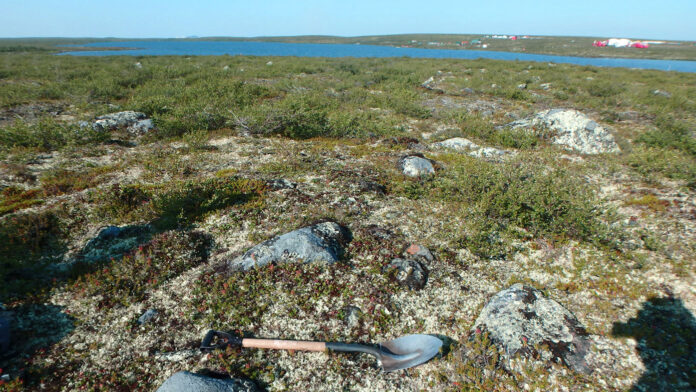Natural diamonds only form under intense temperatures and pressures that are found deep in the Earth, and occasionally they are pushed closer to the surface in molten magmas called kimberlites. Being able to locate these diamond-bearing host rocks more easily would make it easier to know where to mine for them. However, despite being much closer to the surface, kimberlites are still buried under tens of metres of soil and ground rock.
Geochemical analysis of surface soils can give us some clues on what is buried beneath without having to drill, but it turns out that there are lifeforms much better at sniffing out kimberlites than we are.
“Microbes are better geochemists than us, and there are thousands of them,” said lead author Rachel Simister, who contributed to this work as a postdoctoral researcher at the University of British Columbia, in a press release.
“You might run out of elements to sample, but you’ll never run out of microbes.”
The study was published in Nature Communications Earth & Environment.
Microbes have evolved to sense and interact with their environments, and microbial communities reflect the mineral nutrients that are available to them.
Biological surveys have long been used to hunt for mineral deposits, as plants can also point to relevant soil composition, but they don’t give clear indications of exact buried ore locations. Looking at the microbes that live in surface soils gives unprecedented sensitivity and resolution on where kimberlites are buried.
The team used DNA sequencing to look for biological fingerprints that form in response to kimberlites. Every gram of soil is home to thousands of microbial taxa, giving rise to thousands of genes that can point us in the right direction.
The study started by amending soils from the sub-arctic tundra with pulverized kimberlite and watching to see how the microbial communities shifted over time. This gave a library of 65 indicator microbes that like to live in and around kimberlites.
The team then moved to studying an exploration site in the Northwest Territories, where the locations of underlying kimberlites had already been well defined by drilling. They found 59 of the 65 indicators living in the soil, and 19 of them were highly enriched in the soils directly above the buried ore. The field analysis also helped them grow their library to 78 indicator microbes.
That expanded library helped them move on to blind discovery of buried mineralization at a second nearby site where kimberlite was suspected. Looking for biological fingerprints at the Kelvin kimberlite site allowed the team to precisely map the locations of underlying kimberlites without having to drill.
Beyond finding diamonds, kimberlites themselves can be used for carbon capture, helping mitigate climate change. Future studies could also be used to find different kinds of ores, like copper-rich deposits.
Overall, this approach can help us plan the least disruptive ways to access buried minerals, and even give us a roadmap to restoring sites to their natural states.










































